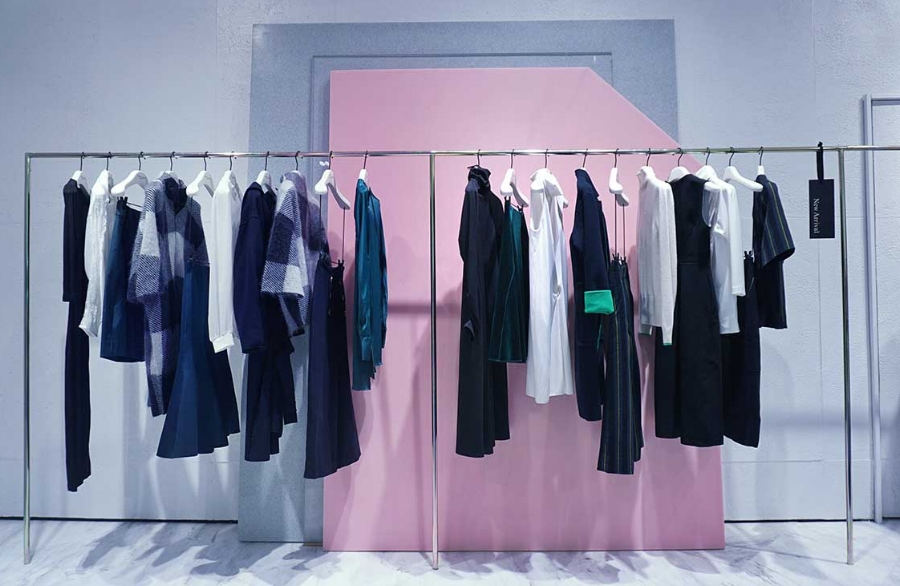
image: Mo & Co.
In light of the ground-breaking meeting on Monday between U.S. President Donald Trump and North Korean dictator Kim Jong-un, some publications have taken to considering whether North Korea is “the next low-cost sourcing destination,” particularly for Asian manufacturers. Such a prospect is not entirely unfathomable, in large part because such sourcing is already underway, albeit in (almost) total secrecy.
Last summer Reuters published a controversial headline, “Your ‘Made in China’ clothes may actually have been made in North Korea.” In doing so, the publication detailed the trend of Chinese clothing and textile firms increasingly relying on North Korean factories “to take advantage of cheaper labor across the border.” Those made-in-North Korea garments are labeled as “Made in China” and exported across the world with the ultimate consumer none the wiser as to the fact that the clothing was made in factories in what has come to be known as the “Hermit Kingdom.”
Despite ever-tightening sanctions imposed by the United Nations, which have been introduced to punish North Korea for its missile and nuclear programs, North Korea is not explicitly banned from manufacturing and exporting clothing or textiles. In fact, textiles were North Korea’s second-biggest export after coal and other minerals in 2016, totaling $752 million, according to data from the Korea Trade-Investment Promotion Agency.
China – which has “a long record of shielding North Korea from more painful sanctions” – paid $1.1 billion to North Korea in 2016 in purchases of coal, with the Chinese using a loophole in the ban on such exports, according to the New York Times.
The figure for fashion is less than half of that – $500 million for 2016 – but it is significant largely due to the North Korean practice of fraudulent labeling. As the Times stated, North Korea laborers toil away in factories in the Chinese city of Dandong, which lies on the North Korean border, for between 12- to 14-hours, with just two to four days off each month and a monthly wage of no more than $260. Using “high-end European machines,” they sew clothes with “Made in China” labels that are then shipped to China and then again from there.
In North Korea, itself, where roughly forty percent of the population in North Korea – or about 24 million people – lives below the poverty line in the nation’s countryside and lacks proper medical care and medication, Human Rights Watch has extensively documented the government’s “systematic use of forced labor from ordinary citizens.” Additionally, the treatment of North Korean workers routinely “falls short of international labor standards,” according to the human rights organization, “with no right to freedom of association or expression, control by minders who limit freedom of movement and access to information from the outside world, long working hours and no right to refuse overtime.”
The $500 million, which is paid by Chinese companies to North Korean manufacturers in American currency, enables the dictatorship “to sustain its economy and finance its program to build a nuclear weapon that can strike the United States,” according to the Times.
While the United Nations sanctions do not bar North Korea from exporting clothing or textiles, U.S. law – Section 307 of the Tariff Act of 1930 (19 U.S.C. § 1307) – prohibits the importation of merchandise “mined, produced or manufactured, wholly or in part, in any foreign country by forced labor.”
The Tariff Act provision was strengthened by the Countering America’s Adversaries Through Sanctions Act, which was enacted in 2017 and creates a rebuttable presumption that “goods, wares, merchandise, and articles mined, produced, or manufactured in whole or in part by North Korean nationals or citizens anywhere in the world are [the result of] forced labor under Section 1307,” thereby, prohibiting their entry into the U.S.
However, Chinese manufacturers see North Korea – despite its very well-established status as the home of forced-labor exports and other human rights abuses – and its laborers as an undeniable opportunity to further lower the cost of manufacturing. This is particularly attractive as labor costs continue to rise in mainland China, resulting in no shortage of factory owners looking to relocate their own factories in lower-cost manufacturing hubs, such as Bangladesh, Cambodia, and Myanmar.
It is clear that such large-scale acts of fraud and the violations of place-of-origin and labeling rules that occur in connection with the shadowy manufacturing agreements between Chinese and North Korean companies, paired with most retailers’ lack of exact knowledge as to the complexities of supply chains, very well may result in the presence of North Korean-made garments (labeled as “Made in China”) in the U.S. and other Western countries.
What is likely not up for debate, Western nations, and their consumers, are almost certainly not yet ready to wear t-shirts with “Made in North Korea” labels and no small number of Trump, Jong-un meetings will not change that.







